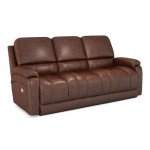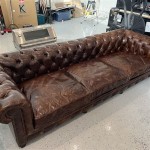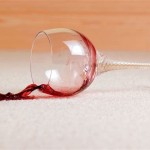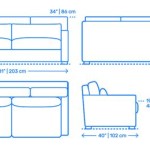How To Remove Ballpoint Pen From Sofa: A Comprehensive Guide
Dealing with an accidental ballpoint pen mark on a sofa can be a frustrating experience. The ink, designed for permanence on paper, can quickly stain fabric and become difficult to remove. However, with the right approach and understanding of different fabrics and cleaning agents, it’s often possible to diminish or eliminate the stain. This article provides a detailed guide on how to remove ballpoint pen ink from sofas, focusing on various techniques, precautions, and considerations for different materials.
The success of ink removal largely depends on factors such as the type of ink, the type of fabric, the age of the stain, and the cleaning methods employed. A fresh stain is typically easier to remove than one that has been allowed to sit for several days or weeks. Similarly, certain fabrics are more absorbent than others, making ink removal more challenging. The following sections outline proven methods, emphasizing the importance of testing in an inconspicuous area before proceeding with stain removal on the main surface.
Understanding Your Sofa Fabric
Before attempting any cleaning method, it’s crucial to identify the fabric type of the sofa. This information is often found on a tag attached to the sofa, usually located under the cushions or on the back. Common codes found on these tags include:
- W: Indicates that the fabric can be cleaned with water-based solutions.
- S: Denotes that only solvent-based cleaners should be used. Water-based solutions may cause staining or damage.
- WS: Means that either water-based or solvent-based cleaners can be used.
- X: Indicates that only vacuuming or professional cleaning is recommended. Water and solvent-based cleaners should be avoided.
If the tag is missing or illegible, it’s best to err on the side of caution and test any cleaning solution in a hidden area of the sofa, such as the back or under a cushion. Observe the area for any discoloration, shrinkage, or other adverse reactions before proceeding to clean the ink stain.
Different types of fabrics require different approaches. For example, delicate fabrics like silk or velvet may require professional cleaning to avoid damage. Durable fabrics like microfiber or cotton can often withstand more aggressive cleaning methods, but testing is still essential.
Common Household Solutions and Techniques
Several household items can be effective in removing ballpoint pen ink from sofas. These solutions are often readily available and can be used as a first line of defense against ink stains. However, it's paramount to remember the importance of spot-testing before widespread application.
1. Isopropyl Alcohol (Rubbing Alcohol): This is one of the most common and effective methods for removing ballpoint pen ink. It acts as a solvent, breaking down the ink and allowing it to be absorbed. To use isopropyl alcohol:
- Dampen a clean cotton ball or cloth with isopropyl alcohol. Do not saturate the cloth.
- Gently blot the ink stain, working from the outside in to prevent spreading. Avoid rubbing vigorously.
- Continue blotting with clean sections of the cloth until the ink is no longer transferring.
- Once the stain is lifted, blot the area with a clean, damp cloth to remove any remaining alcohol residue.
- Allow the area to air dry completely.
2. Hairspray: Hairspray, especially older formulations, often contains alcohol, which can act as a solvent similar to isopropyl alcohol. To use hairspray:
- Spray a small amount of hairspray onto the ink stain.
- Let it sit for a few seconds, but do not allow it to dry completely.
- Blot the stain with a clean cloth, working from the outside in.
- Repeat as needed until the ink is lifted.
- Clean the area with a damp cloth to remove hairspray residue.
- Allow the area to air dry.
3. Dish Soap and Water: A mild solution of dish soap and water can be effective for removing less stubborn ink stains, particularly on water-safe fabrics (code W). To use dish soap and water:
- Mix a small amount of mild dish soap with lukewarm water.
- Dampen a clean cloth with the soapy water.
- Gently blot the ink stain, working from the outside in.
- Rinse the area with a clean, damp cloth to remove soap residue.
- Blot dry with a clean cloth.
- Allow the area to air dry.
4. White Vinegar: White vinegar is a natural cleaning agent that can help dissolve ink stains. To use white vinegar:
- Mix equal parts white vinegar and water.
- Dampen a clean cloth with the vinegar solution.
- Gently blot the ink stain, working from the outside in.
- Rinse the area with a clean, damp cloth.
- Blot dry with a clean cloth.
- Allow the area to air dry.
5. Baking Soda Paste: For more stubborn stains, a baking soda paste can be used as a mild abrasive. To use baking soda paste:
- Mix baking soda with a small amount of water to form a paste.
- Apply the paste to the ink stain.
- Gently rub the paste into the stain with a clean cloth.
- Let the paste dry completely.
- Vacuum up the dried baking soda.
- Clean the area with a damp cloth to remove any remaining residue.
- Allow the area to air dry.
Each of these methods should be tested in an inconspicuous area first. The effectiveness of each method can vary depending on the fabric and the ink type.
Addressing Specific Fabric Types and Stubborn Stains
While the previously mentioned methods can be effective for removing ink from a variety of fabrics, certain fabrics may require specialized care or more aggressive cleaning techniques. In addition, stubborn stains that persist after initial attempts may necessitate a different approach.
1. Microfiber: Microfiber is a synthetic fabric known for its durability and stain resistance. However, ink stains can still occur. For microfiber sofas, isopropyl alcohol is generally a safe and effective option. It's crucial to blot gently and avoid over-saturating the fabric, as this can cause watermarks. After blotting with alcohol, use a clean, dry microfiber cloth to blot the area dry.
2. Leather: Leather sofas require a different approach. Harsh chemicals can damage the leather's finish and cause discoloration. Start by gently wiping the ink stain with a damp cloth. If the ink persists, try using a specialized leather cleaner designed for ink removal. Follow the manufacturer's instructions carefully. Another option is to use a small amount of olive oil or leather conditioner to help lift the ink. Apply the oil or conditioner to a clean cloth and gently rub the stain. Wipe away any excess oil with a clean, dry cloth.
3. Upholstery with "S" Code: For sofas with an "S" code, water-based cleaners should be avoided. Instead, opt for a solvent-based cleaner specifically designed for upholstery. These cleaners typically come in spray form and should be used in a well-ventilated area. Follow the manufacturer's instructions carefully, and always test in an inconspicuous area first.
4. Stubborn Stains: If the ink stain persists after multiple attempts with gentler methods, consider using a stain remover specifically designed for ink. These products often contain more potent solvents and may be more effective at removing stubborn stains. Always read and follow the manufacturer's instructions carefully, and test in an inconspicuous area first. Another option for stubborn stains is to create a paste of powdered laundry detergent and water. Apply the paste to the stain, let it sit for a few minutes, and then gently blot with a clean cloth. Rinse the area with a damp cloth and allow it to air dry.
5. Professional Cleaning: If all else fails, or if the sofa is made of a delicate fabric like silk or velvet, consider hiring a professional upholstery cleaning service. Professional cleaners have the experience, equipment, and cleaning solutions necessary to safely and effectively remove ink stains from a variety of fabrics. They can also provide advice on how to prevent future stains.
It is important to remember that patience is key. Multiple applications of a cleaning solution may be necessary to fully remove the ink stain. Avoid rubbing the stain vigorously, as this can spread the ink and damage the fabric. Always blot gently, working from the outside in.
After removing the ink stain, it's important to properly dry the area. Use a clean, dry cloth to blot up any excess moisture. You can also use a fan or hairdryer (on a low setting) to speed up the drying process. Avoid using excessive heat, as this can damage the fabric.
Preventing future ink stains is also essential. Consider using slipcovers or throws to protect the sofa fabric. Keep pens and other writing instruments away from the sofa. If an ink stain does occur, address it as quickly as possible, as fresh stains are typically easier to remove than older ones.
By following these guidelines and taking the time to properly test and apply cleaning solutions, it is often possible to successfully remove ballpoint pen ink from sofas and restore them to their original condition. Remember that different fabrics and ink types may require different approaches, so it's crucial to be patient and persistent. If in doubt, always consult with a professional upholstery cleaner.

How To Remove Ballpoint Ink Stain From Fabric Sofa

How To Remove Ink From Sofa Fabric 3 Easy Ways Ball Pen

How To Remove Pen Marks From Leather Sofa The Colour Doctor

How To Remove Ink From Sofa Fabric 3 Easy Ways Ball Pen

Here Is How To Remove An Ink Stain From Your Fabric Couch Famous Cleaning

How To Remove An Ink Stain From A Couch 3 Easy Methods

How To Remove An Ink Stain From A Couch 3 Easy Methods

How To Remove Ink Stains On Leather Everyday Skate

How To Remove Ink From Leather 7 Proven Methods Manmadediy

How I Remove Biro Pen Marks From A Sofa Or Couch
Related Posts








